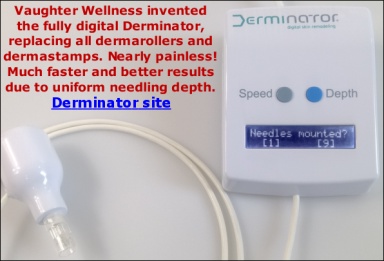We have done a
dermaroller review and that roller (which goes under different names) was so bad that we threw it away and never even tested it fully.
That "MNS roller" is easily recognizable for its cheap, chunky, squarish design (where the handle becomes the roller head).
That roller can also be instantly recognized by the weak handle - it bends too much when pressure is applied, making it impossible, especially with longer needle lengths, to roll stably.
Its needles are not surgical steel. The roller is of such bad, cheap quality that it is the only dermaroller of which I'd say "definitely don't buy it - so bad that it may be bad for the skin to use".
I have posted before about this roller:
https://http://forums.owndoc.com/dermarolling-microneedling/SRS-Micro-Meso-RollerAny company with that roller in their assortment is deliberately ripping you off, because we know how much that roller costs, wholesale, in bulk. I better not tell you, or you'll be very angry.
Well.. It costs about 4 dollars. It's by far the cheapest dermaroller in the world, and we are not happy with the companies pretending that it's the bee's knees.
This business attracts many "get-rich-quick-on-the-internet" types. Buy something for two bucks, sell it for fifty, all the while promising the moon, using every advertizing trick in the book. A flashy website is no guarantee for quality. The more marketing they do, the more money they have to spend on marketing, the less money left for the roller. Good rollers sell themselves. We do no marketing at all, zero. You won't find our ads in Google or anywhere else, except on our own site. We don't post commercial messages or links on forums. And we sell a dermaroller every 20 minutes, day and night, worldwide! We are growing steadily. Why? Our customers bring in new customers, and our customers stick with us long-term. Our business model is to have little operating costs and a small margin, so that we can sell very high quality at the sharpest margins, outcompeting all the greedier sellers, all the scammers and even all the companies that are larger and therefore need to hire marketing people, website people, bookkeeping and advertizing people. A good product sells itself and won't need thousands of sites all "pushing" it.





